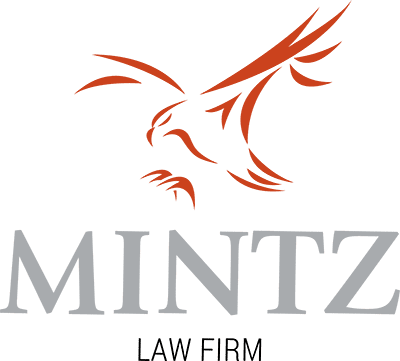How Colorado’s Underinsured Motorist Coverage Works When Limits Are Exhausted
Serious car accidents often result in damages far exceeding Colorado’s minimum insurance requirements. When the at-fault driver carries only $25,000 in bodily injury coverage but your medical bills, lost wages, and other damages total $150,000, you face a massive gap in compensation. Underinsured motorist coverage exists specifically to bridge this gap, stepping in when the responsible driver’s policy limits prove insufficient to cover your full losses.
Colorado insurance law requires all insurers to offer underinsured motorist coverage equal to your bodily injury liability limits unless you decline it in writing. Understanding how this coverage works, particularly regarding exhaustion of the at-fault driver’s limits and your ability to stack multiple policies, becomes critical when facing serious injuries caused by inadequately insured drivers.
When Underinsured Motorist Coverage Applies
UIM coverage activates when the at-fault driver carries insurance, but their policy limits fall short of your total damages. This differs from uninsured motorist coverage, which applies when the responsible driver has no insurance at all. Both coverages typically appear together on your policy as UM/UIM, offered at identical limits. The coverage protects you whether you’re driving your own vehicle, riding as a passenger, walking as a pedestrian, or cycling when struck by an underinsured driver.
Colorado law mandates that insurers offer UM/UIM coverage at amounts equal to your bodily injury liability limits. If you carry $100,000 in liability coverage, your insurer must offer you $100,000 in UM/UIM protection. You can decline this coverage or select lower limits, but you must do so in writing. Given that approximately 17.5% of Colorado drivers lack insurance and many others carry only minimum coverage, purchasing robust UM/UIM protection provides essential financial safety.
How the Exhaustion Process Works
Understanding when the at-fault driver’s limits are considered “exhausted” determines when your UIM coverage kicks in. Colorado’s landmark case Tubbs v. Farmers Insurance clarified this issue significantly. The court ruled that exhaustion clauses requiring you to actually collect the maximum amount from the at-fault driver’s policy before accessing your UIM coverage are void and unenforceable under Colorado law.
This means your UIM coverage becomes available once the at-fault driver’s legal liability limits are reached, regardless of how much you actually recovered from their insurer. For example, if the negligent driver carries $50,000 in coverage but your damages total $200,000, your UIM coverage activates based on their $50,000 limit even if you settled with them for $30,000. Your insurer must cover damages exceeding the at-fault driver’s policy limits up to your UIM coverage amount. This protection prevents insurance companies from denying UIM claims simply because you settled with the at-fault driver for less than their maximum limits.
Stacking Multiple Policies for Greater Protection
Colorado law allows stacking of UM/UIM coverage, meaning you can combine limits from multiple policies to increase your total available compensation. If you own three vehicles and carry $100,000 in UM/UIM coverage on each, you can stack these policies to access $300,000 in total coverage after an accident with an underinsured driver. This applies whether all three vehicles are on one policy or on separate policies.
Since 2008, Colorado insurers cannot include anti-stacking language that prevents policyholders from combining coverage they’ve paid premiums to obtain. You can stack coverage across multiple vehicles you own, and you may also stack coverage from policies held by relatives residing in your household. For instance, if you’re injured as a passenger in a family member’s car and the at-fault driver is underinsured, you may be able to stack your own UIM coverage, the UIM coverage on the vehicle you occupied, and potentially other family policies depending on your specific situation.
No Offset Provisions Under Colorado Law
Colorado prohibits insurance companies from offsetting or reducing your UIM coverage by amounts paid from the at-fault driver’s liability policy. This represents another significant protection for injured victims. Your UIM insurer must pay up to your policy limits without deducting what you already received from the negligent driver’s insurance.
Using the earlier example, if your damages total $200,000, the at-fault driver’s policy pays $50,000, and you carry $175,000 in UIM coverage, you receive the full $175,000 from your UIM policy rather than just $150,000 after an offset. This means you’d collect $225,000 total, even though your damages were $200,000. The no-offset rule ensures injured victims receive full compensation up to available policy limits.
Filing Deadlines and Claim Procedures
Colorado generally requires UM/UIM claims to be filed within three years from the accident date. However, if you receive payment for your underlying injury within three years, you may have two additional years to file a separate UIM claim. These extra years allow you to fully understand your injury’s scope and any uncompensated losses before pursuing UIM benefits.
Before settling with the at-fault driver’s insurance company, consult with an attorney about your UIM coverage. Many insurance policies require you to obtain your own insurer’s permission before accepting settlements from liable drivers. Settling without this approval may jeopardize your ability to access UIM benefits later. Your attorney can coordinate communications between the at-fault driver’s insurer and your own carrier to protect all available compensation sources.
Get Help from Mintz Law Firm
Navigating underinsured motorist claims requires understanding Colorado’s complex insurance laws and how they interact with your specific policy provisions. At Mintz Law Firm, our attorneys have extensive experience maximizing compensation for clients injured by underinsured drivers. We know how to evaluate whether UIM coverage applies, calculate total available limits through stacking, and fight insurance companies that improperly deny or undervalue claims.
Insurance companies often resist paying UIM benefits, arguing about exhaustion requirements, stacking availability, or claim values. Our team thoroughly investigates your coverage options, including policies you may not have considered, and pursues every available dollar. Whether you’ve suffered injuries in a car accident, motorcycle crash, or pedestrian collision, we’re here to help. Contact our team today to schedule a free consultation and learn how we can help you recover full compensation through your UIM coverage.

